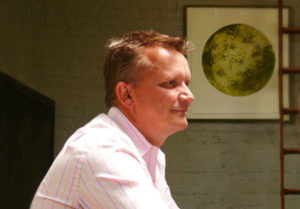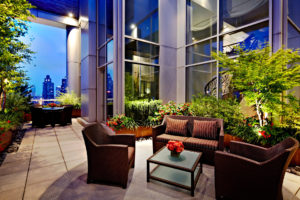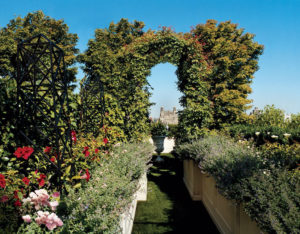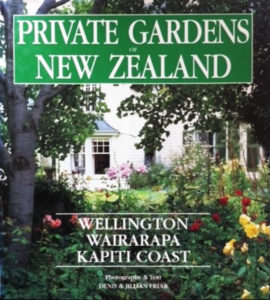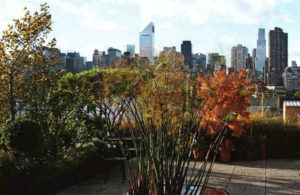Philip Roche and Grahame Hubbard have been partners and co-owners of Plant Specialists since 2004. They run their massive, enormously successful landscaping enterprise from a block-long brick compound in Long Island City purchased in 1978 by the founders Tim and Dabny DuVal. The setting is phenomenal, an old iron foundry transformed into green houses, an office, two apartments, an event space, and a magnificent rooftop terrace overlooking the East River.
So let’s begin with the basic question—you’ve been in the business since the 1970s, how have you seen the business change?
I think it’s become a more essential part of somebody’s life. It think people see when they’re doing a kitchen or a bathroom, maybe they didn’t really always want to do the terrace but it’s definitely more an essential part of modern living. They want to have indoor and outdoor, even if though they don’t have time to use it.
I guess so. Although I don’t know. I suppose everything now is green, the whole world is going ‘green’. I mean besides being eco-friendly and all that, I’m not even all that sure what it means. What does it mean as far as your world goes?
It has different aspects [to it] because you have the terrace on Park Avenue that just has plants and things to look pretty but there’s also now a huge trend towards, and some of it is even state and federally funded, for people to do green roofs. That means covering the entire surface of the roof with plant material. New York is probably quite a long way behind the rest of the country on this green roof movement. I’m not sure if you know much about the technicalities of the green roof movement…


With the webbing and stuff?
They can plant the whole roof surface and it does three or four things. It can insulate the building from heat loss and heat gain, it’s producing oxygen and using carbon dioxide, which is great, but more importantly in a city like New York, when it rains in the summer it’s raining on a black tar roof so the hot water rushes down the storm water systems and floods the subways … but if you have a green roof, the rain hits the soil and slowly goes down the storm water drains. So it is reducing that heated flow, which busts open the storm waters and it cools the water, so you’re not pumping a lot of hot water into the rivers, and it also filters some of the muck. Some of the buildings in the city, if they have true green roofs, they can re-cycle that water to flush toilets.
Isn’t it more expensive to be green?
Yes. Initially it is.
And the upkeep too, right?
The upkeep doesn’t necessarily have to be – depending on the plants you choose. They tend to be relatively … nothing is totally maintenance-free … but it’s a lot more maintenance-friendly.
I don’t really think about plants because I live in an indoor space. I mean other than maybe buying an orchid at Whole Foods, I think this is kind of a bizarre place to want to be green – I don’t even barely re-cycle. Why bother? New York City doesn’t even really do things like that.
I think you’ll probably find that you are a lot more green-thinking than you realize. I mean even buying [produce] from Union Square, the quality is better, it’s grown locally, or within 150 miles of the city and you’re supporting local farmers … I think you’ll find as a trend, we trending a lot greener than we did before. But I think we are, as New Yorkers, behind the world’s trend. I think in five to ten years, we will have to catch up. It’s just the excessive use of everything in the city … it’s fabulous [laughs] but…
Well, that sort of leads me to the next question. It’s a nightmare economy for everybody—how is that trickle-down for you?
We may not have some of the very young new bankers that we might have had before. But we’ve been around since 1970, so we have a lot of established clients who really haven’t been so drastically affected. And someone was saying the other day, that people maybe are focusing on their home environment, rather than hopping on a jet and going somewhere else. Even if you only have a little garden in New York City, it’s very precious, so people get very protective of them and love their gardens. I think it’s a direct reaction for everything being so out of your control, and then you have this controlled environment of your own, it’s a finite little space.


Now that’s interesting—now that’s a deep question! [Laughter] But actually with plants, you can’t really control the life of a plant—I mean you can try…
No, you can’t. There’s something very, very satisfying ’though about putting something in, either in a seed form, or a cutting or small plant form, and then growing it to a point … there is a sense of satisfaction when you grow something yourself. To go and pick your own strawberries, it’s such a cool thing to be able to do.
People get surprisingly emotional and passionate about their plants – and when they die, they’re like … and they do die, quite regularly. [laughs]. It’s a very harsh environment for a plant, New York City.
What does it mean to have green thumbs? Do you think some people are just naturally better at gardening?
I do believe that people are naturally better. I don’t really believe that anyone can not grow plants but I do believe that some people are naturally better. We have clients that have had the same plants in their apartments for 30 years … and we have other clients that every six weeks we replace them.What do you have to do to be so good with a plant?
You need to understand that a plant is a living thing. It needs to be kept dust free – they breathe through their leaves. They need to be watered regularly, they need to eat, they need fertilizer. It needs to be loved—and hugged. [laughs]


